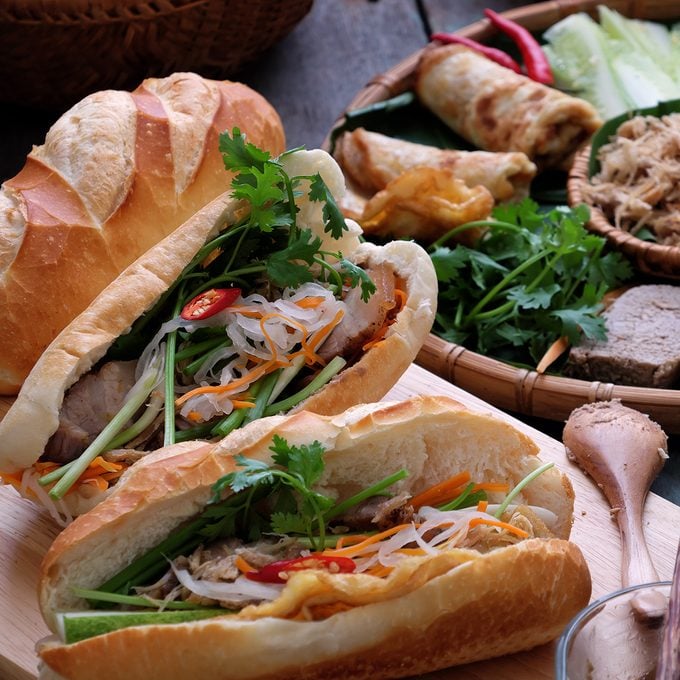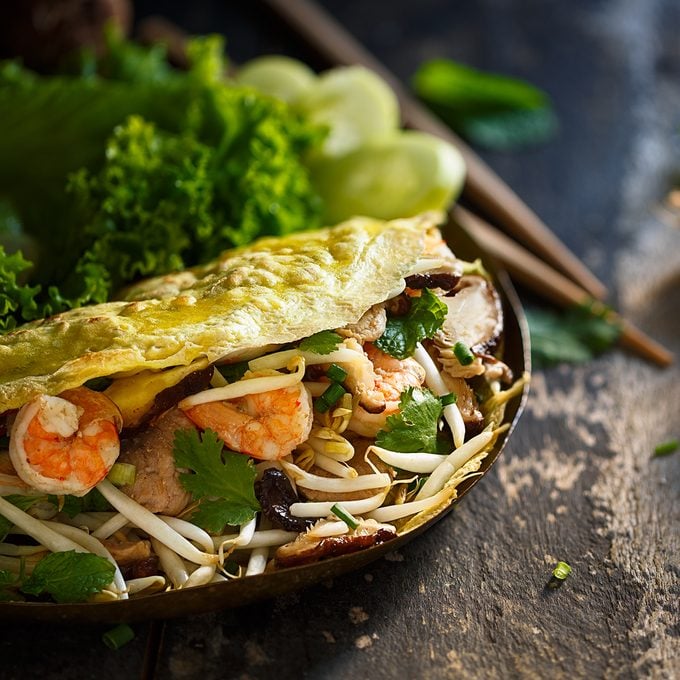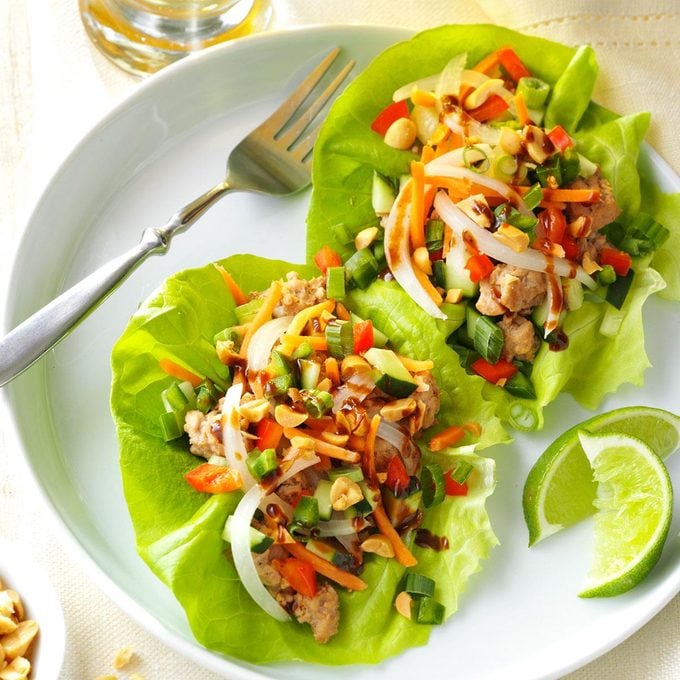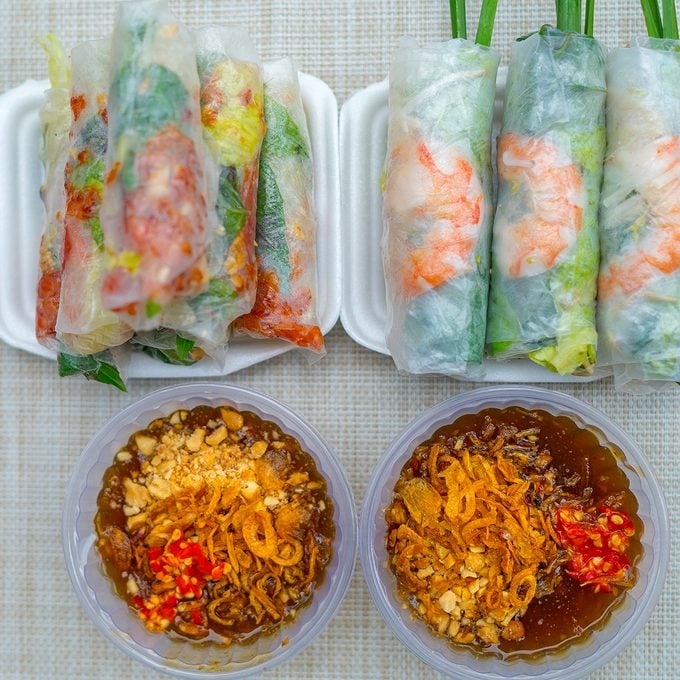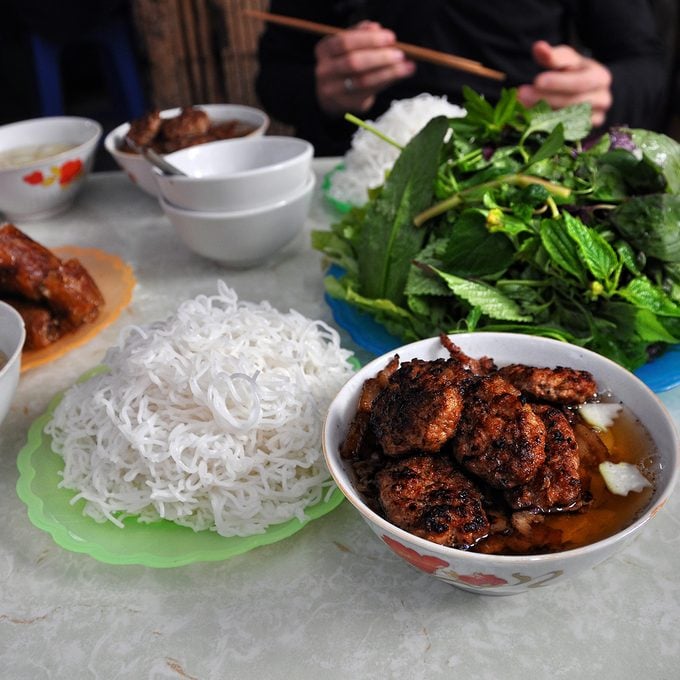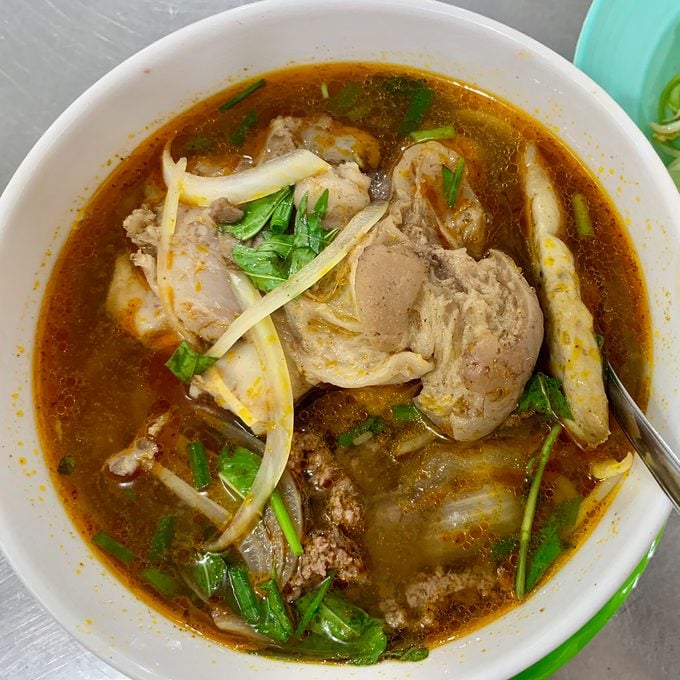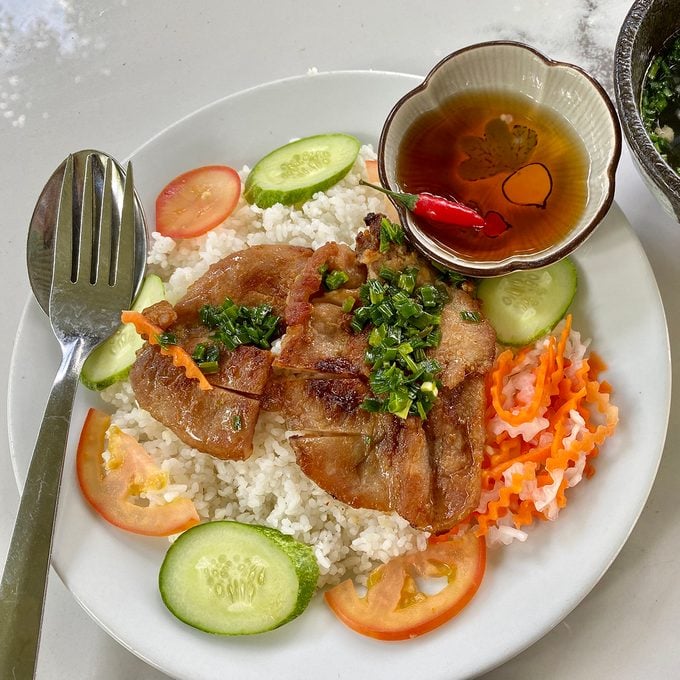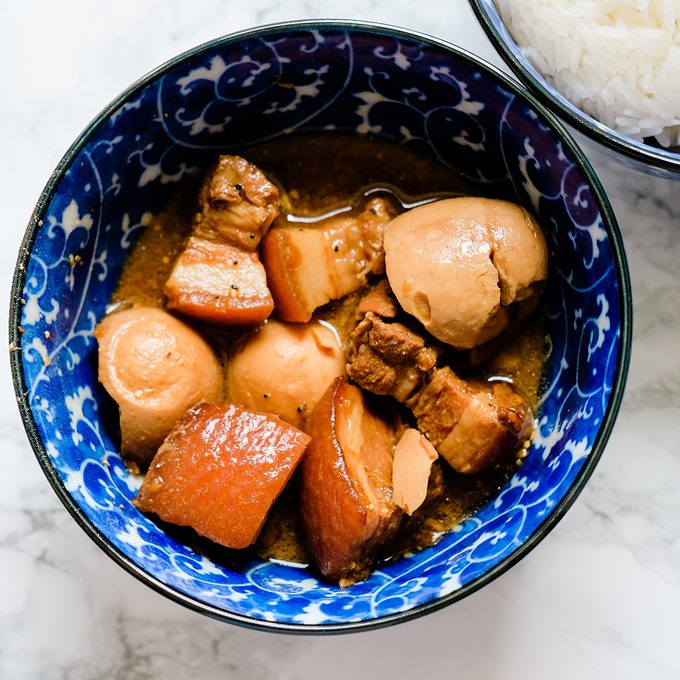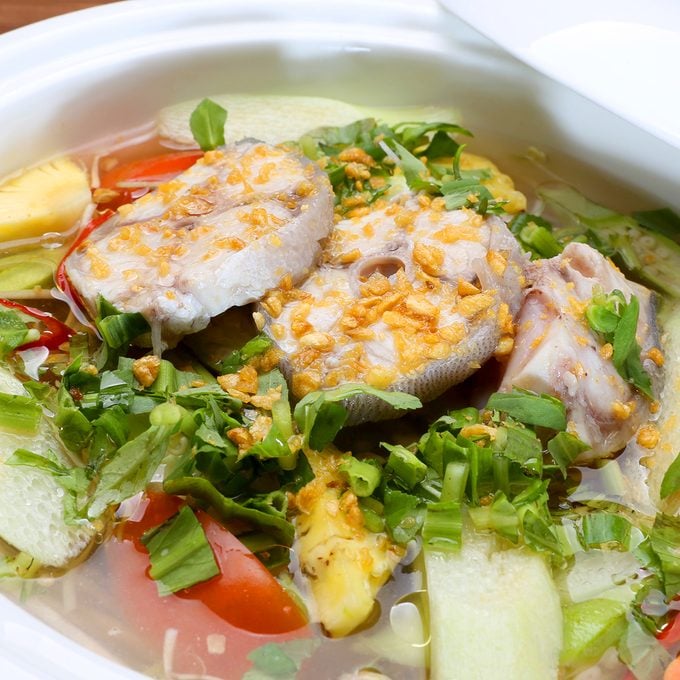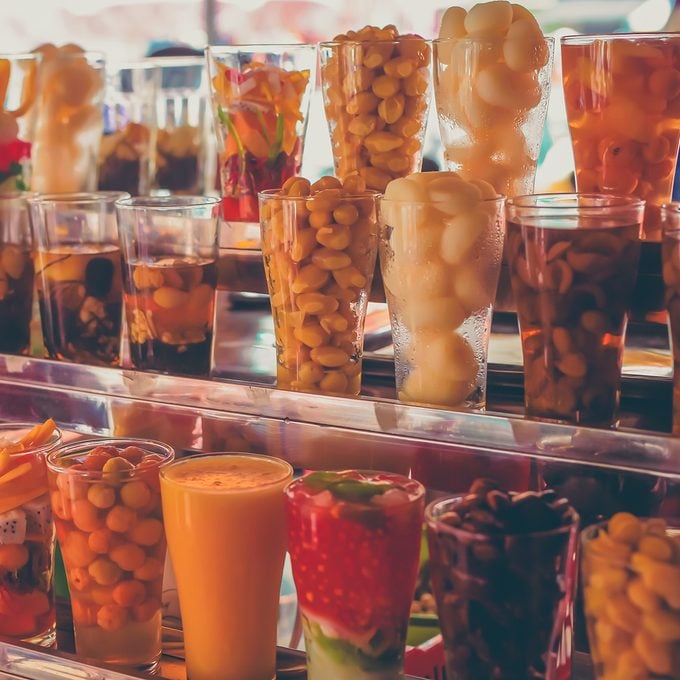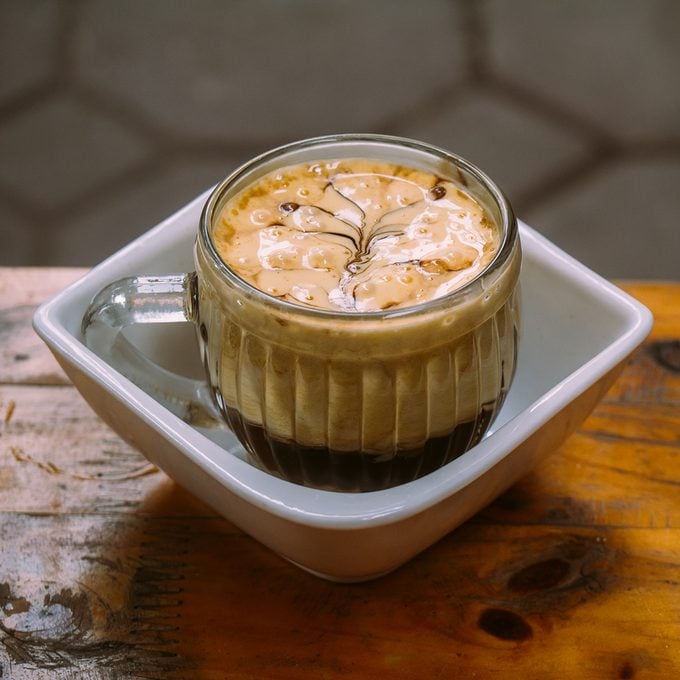These San-Francisco style noodles are a American mashup of Vietnamese and Italian cuisine
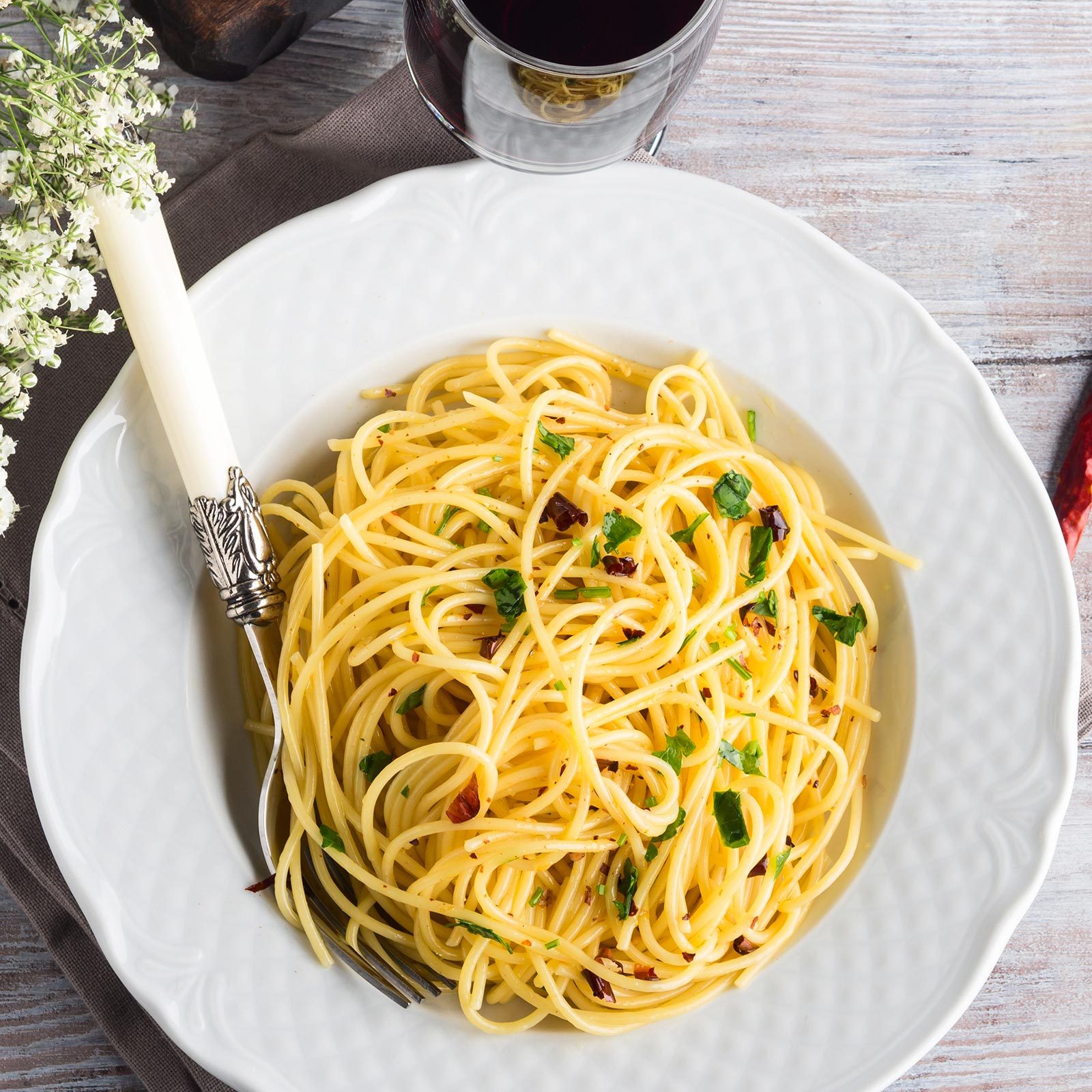
The Most Popular Recipe of the Year Is Full of Garlicky Flavor and We’re Here for It

The other evening, I made the most popular recipe of the year, at least according to the New York Times. The recipe, which was viewed more than 1.2 million times, is a San Francisco-style noodle dish from food writer J. Kenji López-Alt.
Among its simple list of ingredients is an eye-opening 20 cloves of garlic, as well as fish sauce, oyster sauce, soy sauce and Parmesan cheese. Since garlic is pretty much a food group in my house, and I always have parm, fish sauce and oyster sauce in my fridge, I figured I would give it whirl.
What Are San Francisco-Style Vietnamese American Garlic Noodles?
This garlicky noodle recipe is a twist on a classic San Francisco dish, created by Helene An at her Thanh Long restaurant in the early 1970s, where it has been famously served with baked Dungeness crab for the past five decades. An fled Vietnam during the war, settling in the Bay Area and eventually launching a restaurant empire.
In the early days, as López-Alt writes, An “felt that the restaurant would find more success by eschewing authenticity in favor of dishes that were designed specifically to appeal to the local clientele.” She was inspired by a disappointing garlic pasta dish at an Italian restaurant to create her own rendition.
Though popular, the real recipe remains a secret. In López-Alt’s interpretation, he calls for spaghetti rather than Asian noodles and intuits the use of Southeast Asian sauces such as fish sauce and oyster sauce as ingredients. Coupled with soy sauce, Parmesan cheese and all that garlic, it’s an intense, unique dish.
Why Do You Need 20 Cloves of Minced Garlic?
Since this dish became so popular this year, there has been online debate on how to make it. One of the biggest points of discussion is how to handle the 20 cloves of garlic, which are to be “minced or smashed in a mortar and pestle.”
Minced garlic can be achieved in a number of ways. Mincing with a knife can be tricky if you don’t have good knife skills, and you run the risk of not having uniform pieces that cook evenly. Smashing the garlic before you mince makes things faster and slightly easier. I choose to use a microplane grater instead of a knife for ease. The risk with a grater is that the garlic can be a little more spicy or bitter, but since I’d be cooking the garlic for a few minutes, I wasn’t worried about that. If you have a mini food processor, that works too. But avoid a larger food processor, which will chop the garlic too big and unevenly.
How to Make San Francisco-Style Vietnamese American Garlic Noodles
The great thing about cooking this dish is that once you learn the basics, you don’t really need a recipe anymore. Two quirks of the recipe involve cooking the spaghetti. First, the Times‘ suggests cooking the pasta in a skillet or sauté pan, covered by 2 inches of boiling water, rather than a big pot of boiling water. The reason here is to get starchier pasta water, which you’ll want to reserve to toss with the pasta. The other quirk is to remove the pasta from the boiling water before it’s totally al dente (about 2 minutes less than the time on the package). The pasta will continue to cook as you add it to the sauce to toss over high heat.
Ingredients
- 4 tablespoons unsalted butter
- 20 garlic cloves, minced
- 4 teaspoons oyster sauce
- 2 teaspoons soy sauce
- 2 teaspoons fish sauce
- 1 pound dry spaghetti
- ¼ cup grated Parmesan cheese
- One bunch of scallions, thinly sliced
Directions
Step 1: Combine ingredients
Melt butter in a saucepan or wok over medium heat. Add garlic and cook for 2 minutes, being careful not to brown. Add oyster sauce, fish sauce and soy sauce, stir to combine, then remove from heat.
Step 2: Cook the pasta
Bring a couple of inches of salted water to a boil in a skillet or saucepan, over high heat. Add the spaghetti. Stir the pasta a few times as it cooks until it’s almost al dente (about 2 minutes less than the recommended cook time on the package).
Step 3: Bring it all together
Using tongs, transfer the cooked pasta to the garlic-umami sauce, along with whatever water clings to it (be sure to reserve the pasta water!). Bring heat to high, and add cheese. Stir and toss vigorously until the sauce is creamy and emulsified. Add reserved pasta water if it looks too greasy or dry. Stir in scallions and serve immediately.




















